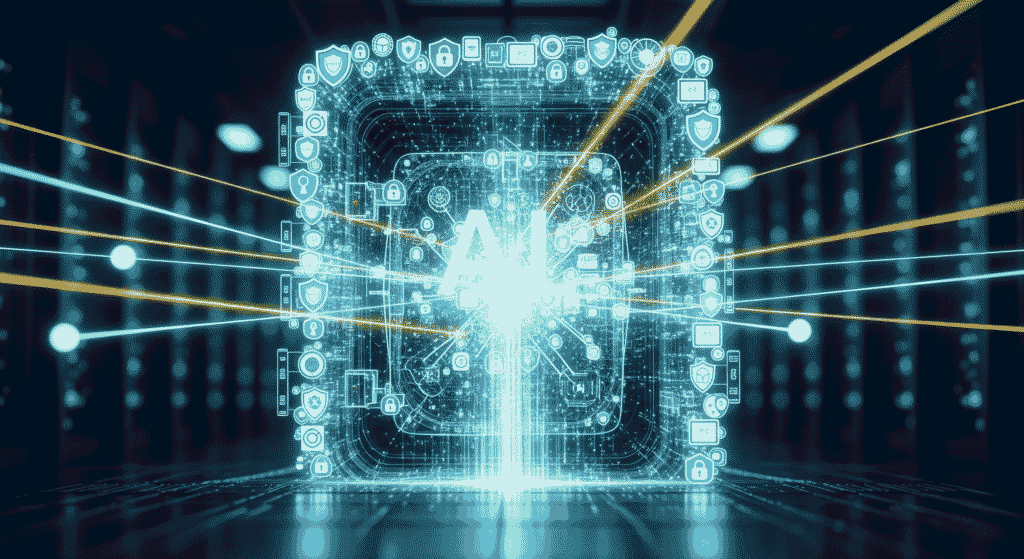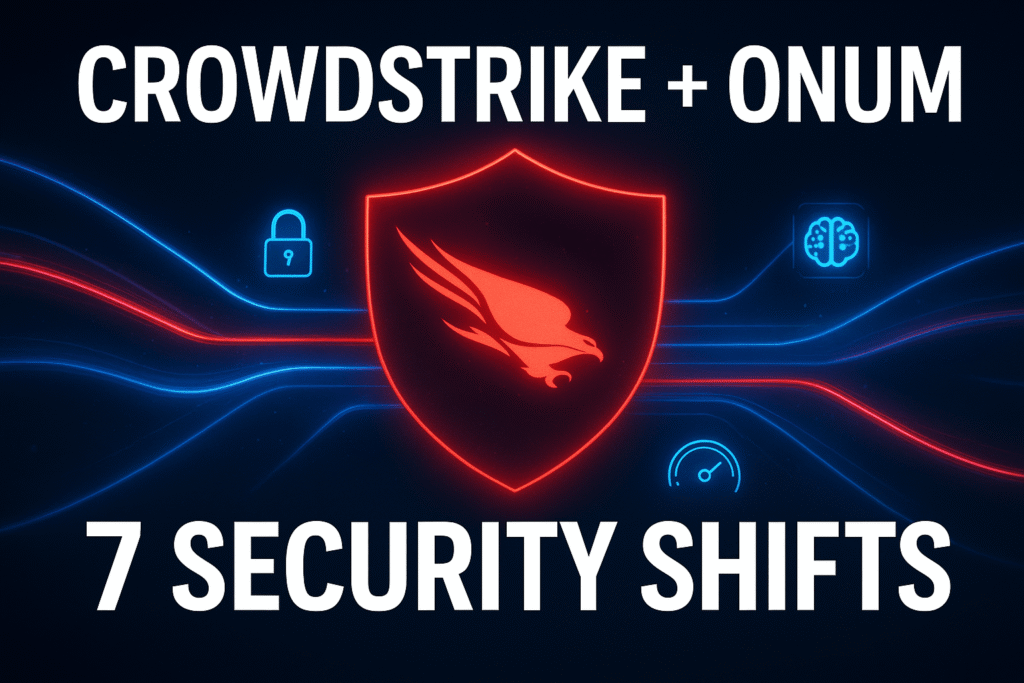When you typed ‘AI consolidation in cybersecurity’ into Google at 1 a.m., you weren’t hunting for fluff—you needed answers fast. I’ve been there, staring at vendor proposals while wondering how artificial intelligence is reshaping the entire security landscape. The truth? AI consolidation in cybersecurity isn’t just a trend—it’s the seismic shift that’s about to redefine how you protect your organization.
You’re watching security giants merge AI capabilities, smaller vendors get acquired, and new AI-powered security platforms emerge seemingly overnight. But here’s what most articles won’t tell you: this consolidation wave will either supercharge your defenses or leave you scrambling with outdated tools.
The Bottom Line: What You Need to Know About AI Consolidation in Cybersecurity
AI consolidation in cybersecurity means fewer vendors are offering more comprehensive, intelligent security solutions. Instead of managing 20+ point solutions, you’ll soon work with 3-5 integrated platforms that use artificial intelligence to detect, respond, and predict threats automatically. This shift reduces complexity while dramatically improving your security posture—but only if you adapt quickly.
The 7 Most Critical AI Consolidation in Cybersecurity Points You Must Grasp
- Vendor Landscape Transformation: Major players like Microsoft, CrowdStrike, and Palo Alto Networks are acquiring AI startups to build comprehensive security ecosystems
- Cost Optimization Opportunities: Cybersecurity vendor consolidation can reduce your total security spend by 30-40% while improving coverage
- Enhanced Threat Detection: Consolidated artificial intelligence threat detection systems share data across multiple security layers, catching threats that slip through individual tools
- Skills Gap Solution: Automated security operations handle routine tasks, freeing your team to focus on strategic security initiatives
- Compliance Simplification: Unified platforms streamline audit processes and ensure consistent policy enforcement across your entire infrastructure
- Faster Incident Response: AI-driven correlation engines connect dots across your security stack in seconds, not hours
- Future-Proof Architecture: Consolidated platforms adapt to new threats through machine learning, protecting your investment long-term
How AI Consolidation in Cybersecurity Actually Impacts Your World
Your current security stack probably includes dozens of tools that don’t communicate effectively. AI consolidation in cybersecurity changes this by creating unified platforms where threat intelligence flows seamlessly between detection, analysis, and response systems. You’ll spend less time managing vendors and more time actually securing your organization.
The financial impact is equally significant. Instead of paying separate licenses for SIEM, EDR, network security, and email protection, consolidated platforms offer bundled pricing that typically costs 30-50% less than point solutions. Your procurement process becomes simpler, and your security posture becomes stronger.
But here’s the catch: this transition window won’t last forever. Organizations that delay adoption risk being locked into expensive legacy contracts while competitors gain advantages through AI-enhanced security operations.
Your AI Consolidation in Cybersecurity Action Plan: How to Adapt and Thrive

- Audit Your Current Stack: List all security tools, their costs, and integration gaps. Identify which vendors are actively developing AI capabilities versus those stuck in legacy approaches.
- Research Leading Platforms: Focus on vendors demonstrating real AI-powered security platforms—not just marketing promises. Look for proven machine learning implementations and customer success stories.
- Plan Your Migration Strategy: Start with your biggest pain points. Most organizations begin by consolidating endpoint and network security, then expand to include SIEM and compliance tools.
- Negotiate Transition Terms: Use consolidation trends as leverage in vendor negotiations. Many companies offer migration credits and extended trials to win consolidated deals.
- Invest in Team Training: Automated security operations require different skills than traditional security management. Plan training programs for platform-specific expertise.
- Establish Success Metrics: Define clear KPIs for threat detection speed, false positive reduction, and operational efficiency before implementing new platforms.
- Build Vendor Relationships: Develop partnerships with 2-3 leading AI security vendors rather than spreading resources across dozens of point solutions.
Frequently Asked Questions About AI Consolidation in Cybersecurity
What does AI consolidation mean for cybersecurity?
AI consolidation in cybersecurity refers to the industry trend where major security vendors acquire AI startups and integrate artificial intelligence across comprehensive security platforms, reducing the need for multiple point solutions.
How will AI consolidation in cybersecurity affect costs?
Cybersecurity vendor consolidation typically reduces total security spending by 30-40% through bundled pricing, reduced integration costs, and lower administrative overhead compared to managing dozens of separate tools.
Which companies are leading AI consolidation in cybersecurity?
Market leaders include Microsoft (Security Copilot), CrowdStrike (Falcon platform), Palo Alto Networks (Cortex), SentinelOne (Singularity), and Splunk (AI-driven SIEM), all building comprehensive AI-powered security platforms through strategic acquisitions and internal development.
The Future Is Now—Don’t Wait on AI Consolidation in Cybersecurity
AI consolidation in cybersecurity isn’t coming—it’s here. Every day you delay adaptation is another day your competitors gain advantages through streamlined, intelligent security operations. The vendors leading this transformation are offering unprecedented migration incentives, but these opportunities won’t last forever.
Your organization deserves security that works as hard as you do. Stop managing complexity and start leveraging the power of consolidated, AI-driven cybersecurity platforms. The question isn’t whether this transformation will happen—it’s whether you’ll lead it or be forced to catch up later.
Ready to transform your security strategy? The time for AI consolidation in cybersecurity is now.
To read more article related to cybersecurity click here



